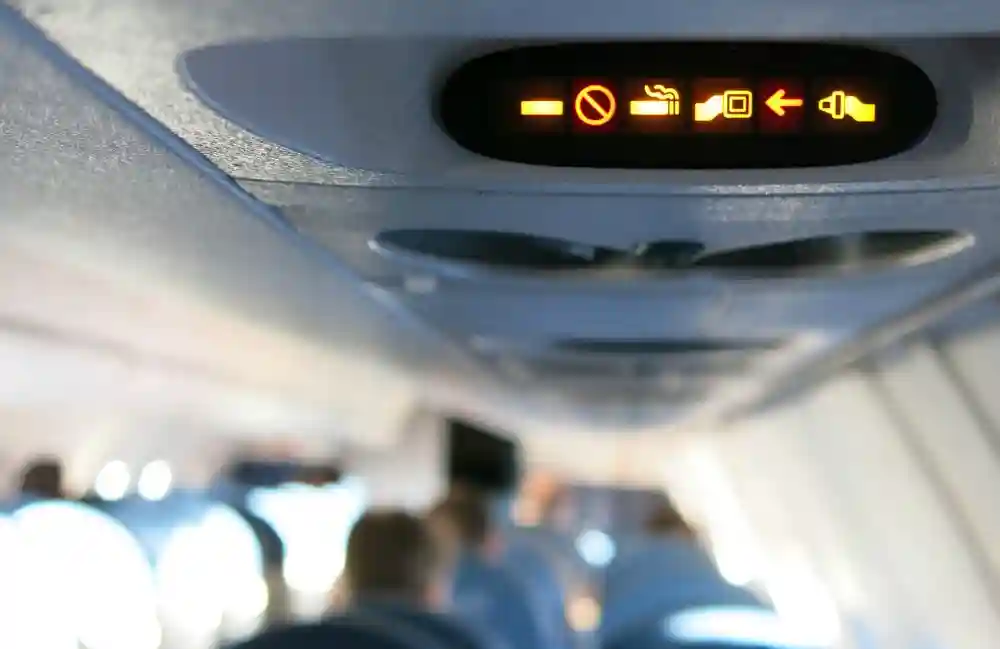TL;DR:
- Turbulence is a major challenge for the aviation industry, leading to operational, safety, and financial implications.
- Advanced technology and training programs are helping to predict and manage turbulence risks.
- Onboard turbulence detection systems, such as LIDAR, provide real-time data to help pilots navigate turbulent areas.
- Weather data is crucial for flight planning and in-flight adjustments to avoid turbulence.
- Case studies highlight the effectiveness of weather data and technology in mitigating turbulence risks.
In aviation, turbulence stands as one of the most unpredictable forces that pilots and airlines must contend with. According to the FAA, there have been almost 200 turbulence-related injuries onboard aircrafts since 2009.
It’s not just a matter of discomfort for passengers; turbulence can lead to significant operational challenges, safety concerns, and financial implications for airlines.
With the advent of advanced technology and sophisticated training programs, the industry is better equipped than ever to predict, manage, and mitigate the risks associated with turbulence.
This article delves into the multifaceted strategies that form the cornerstone of modern turbulence risk management, from the utilization of cutting-edge weather data in pilot training to the deployment of onboard detection systems and the integration of weather forecasting into flight safety protocols.
Through real-world case studies, we’ll explore how these strategies are applied in practice, offering insights into their effectiveness and the lessons learned. As we navigate through these turbulent skies, the goal remains clear: to enhance the safety, comfort, and efficiency of air travel in the face of nature’s unpredictability.
Onboard Turbulence Detection Systems: Investing in Technology
Onboard turbulence detection systems offer pilots an unprecedented ability to foresee and navigate through turbulent patches with greater precision. These systems serve as an essential tool in the cockpit, providing real-time data that can drastically reduce the element of surprise and allow for more informed decision-making in flight.
The Role of Advanced Detection Systems
Modern aircraft are increasingly equipped with state-of-the-art detection systems, such as LIDAR (Light Detection and Ranging) and enhanced weather radar, which can identify turbulence well ahead of the aircraft. These systems analyze atmospheric conditions, including wind patterns and moisture levels, to predict the likelihood and intensity of turbulence, giving pilots a valuable window of time to take preventive action.
Alongside onboard detection systems, leading airlines like JetBlue also harness predictive weather intelligence platforms like Tomorrow.io.
Powered by artificial intelligence and machine learning, these technologies provide an additional layer of data-driven insights into possible turbulence based on up-to-the-minute analysis of changing atmospheric conditions. The integration of advanced meteorological forecasting with detection systems gives pilots a comprehensive view of navigating turbulent zones.
LIDAR Technology
LIDAR technology, in particular, has emerged as a game-changer in turbulence detection. By emitting laser pulses and measuring the reflections from particles in the air, LIDAR provides detailed information about the wind and turbulence conditions miles ahead of the aircraft. This allows pilots to adjust the flight path or altitude proactively, significantly reducing the risk of encountering severe turbulence.
Integrating Detection Systems into Flight Operations
The integration of these detection systems into daily flight operations involves comprehensive training for pilots to understand and effectively utilize the data provided. Airlines invest in continuous education and simulation training to ensure that flight crews are adept at interpreting the system’s outputs and making swift, informed decisions that prioritize passenger safety and comfort.
The Benefits of Technological Investment for Risk Mitigation
Investing in onboard turbulence detection technology offers numerous benefits, including enhanced passenger comfort, reduced risk of turbulence-related injuries, and potential savings in operational costs associated with unexpected turbulence encounters. By minimizing the need for sudden altitude changes or detours, these systems contribute to fuel efficiency and environmental sustainability.
As airlines continue to embrace these advanced technologies, the ability to predict and mitigate the effects of turbulence improves, marking a significant stride toward safer, smoother air travel.
Leveraging Weather Data for Enhanced Flight Safety
In efforts to mitigate turbulence risks, the strategic use of weather data has become a cornerstone of modern aviation safety practices. By harnessing comprehensive meteorological insights, airlines can significantly enhance flight planning, in-flight adjustments, and overall situational awareness, leading to safer and more comfortable journeys.
Weather Forecasting in Flight Planning
The process begins long before takeoff, with flight operations teams analyzing detailed weather forecasts to identify potential turbulence zones along planned routes. This preemptive scrutiny allows for the development of flight plans that either avoid known turbulent areas or prepare for necessary in-flight adjustments. The accuracy and depth of these forecasts, often extending beyond traditional sources to include specialized meteorological services, are crucial for effective turbulence management.
Real-Time Weather Updates
The dynamic nature of weather patterns necessitates continuous monitoring throughout the flight. Pilots and flight dispatchers have access to real-time weather data, including updates on developing storm systems, jet stream shifts, and other critical information that could indicate the onset of turbulence. This real-time data feed, often displayed through advanced cockpit avionics, enables pilots to make informed decisions about route alterations or altitude adjustments on the fly.
Pilot Reports (PIREPs)
An invaluable component of weather data utilization comes from Pilot Reports (PIREPs), which provide firsthand accounts of weather conditions encountered during flight. These reports, shared within the aviation community, offer timely and relevant insights into turbulence locations and intensities, further aiding in the collective effort to navigate around or through turbulent patches safely.
Collaborative Decision-Making
The effective use of weather data is a collaborative effort, involving not just pilots and flight dispatchers but also meteorologists and air traffic controllers. This collaborative decision-making process ensures a holistic approach to flight safety, with each stakeholder contributing their expertise to minimize the impact of turbulence.
By leveraging advanced weather data, airlines can proactively manage turbulence risks, enhancing the safety and comfort of air travel. This strategic approach, combined with the latest in onboard detection technology and comprehensive pilot training, forms a robust defense against the unpredictable nature of turbulence.
Case Studies: Navigating Turbulence Risk with Weather Data
The theoretical frameworks and technologies for mitigating turbulence risks are best understood through their application in real-world scenarios. These case studies illustrate how airlines have successfully navigated turbulence by leveraging advanced weather data, pilot training, and onboard technologies, providing valuable insights and lessons for the broader aviation industry.
Case Study 1: Transatlantic Flight Avoids Convective Turbulence
On a routine transatlantic flight, an airline utilized advanced satellite weather forecasting tools to identify a significant convective weather system developing along the original flight path. The flight operations team, in collaboration with meteorologists, analyzed the system’s trajectory and intensity, deciding to reroute the flight to avoid the turbulent zone. This decision was communicated to the flight crew, who had been trained extensively in weather data interpretation and in-flight adjustment strategies. The onboard weather radar and real-time updates confirmed the presence of the turbulent area, validating the decision to reroute. The flight arrived safely, avoiding the turbulence and maintaining passenger comfort, showcasing the effectiveness of integrating advanced forecasting, pilot training, and onboard technology in turbulence risk management.
Case Study 2: Synergizing LIDAR and Weather Data for Turbulence Avoidance
During a flight near mountainous terrain, an aircraft equipped with LIDAR technology and advanced weather analysis tools detected imminent mountain wave turbulence, triggered by high winds. The flight crew, adept at interpreting both LIDAR readings and weather forecasts, identified the turbulence’s intensity and location. In coordination with air traffic control, they decided to lower the aircraft’s altitude, a decision informed by the real-time LIDAR data and corroborated by weather predictions of increased wind speeds. This integrated approach allowed the aircraft to bypass the turbulent area smoothly, showcasing the effectiveness of combining LIDAR technology with weather data analysis in enhancing flight safety and passenger comfort.
Case Study 3: Collaborative Effort Mitigates Clear Air Turbulence Risk
During a long-haul flight, a series of Pilot Reports (PIREPs) indicated the presence of significant clear air turbulence (CAT) in a region known for its stability. The airline’s operations center, leveraging real-time weather data and pilot reports, identified the CAT’s extent and potential impact. The flight crew, trained to interpret such data and make informed decisions, engaged in a collaborative decision-making process with the operations center and air traffic control. An alternative route was plotted, slightly extending the flight time but ensuring passenger safety and comfort. This case underscores the importance of collaborative efforts, continuous pilot training, and the effective use of real-time data in navigating and mitigating turbulence risks.
Importance of Turbulence Risk Mitigation through Weather Data and Technology for Airlines
Turbulence risk mitigation through the strategic utilization of weather data and technology stands as a paramount priority for airlines worldwide. Incorporating advanced meteorological insights and cutting-edge technological solutions into airline operations has a profound impact on safety, operational efficiency, and passenger satisfaction.
- Enhanced Safety and Passenger Comfort: Turbulence remains a significant safety concern in aviation, with the potential to cause injuries to passengers and crew, as well as damage to aircraft. By leveraging advanced weather data and technology, airlines can proactively identify and avoid turbulent areas, ensuring a smoother and safer flight experience for passengers. This not only enhances safety but also fosters greater confidence and trust among travelers, contributing to overall passenger satisfaction and loyalty.
- Operational Efficiency and Cost Savings: Turbulence encounters often necessitate altitude changes or route diversions, leading to increased fuel consumption and operational costs for airlines. By utilizing real-time weather data and sophisticated onboard detection systems, airlines can optimize flight paths and minimize the need for such adjustments, resulting in significant fuel savings and operational efficiencies. Moreover, proactive turbulence risk mitigation helps reduce flight delays and cancellations, enhancing operational reliability and reducing financial losses associated with disrupted schedules.
- Regulatory Compliance and Liability Management: Airlines are subject to stringent regulatory requirements concerning flight safety and passenger well-being. By implementing robust turbulence risk mitigation strategies supported by weather data and technology, airlines demonstrate their commitment to compliance with regulatory standards and mitigating potential liability risks. This proactive approach not only safeguards passengers and assets but also helps protect the airline’s reputation and legal standing in the event of turbulence-related incidents.
- Environmental Sustainability: Beyond safety and efficiency considerations, turbulence risk mitigation also intersects with environmental sustainability goals. By optimizing flight paths and minimizing fuel consumption through proactive turbulence avoidance, airlines reduce their carbon footprint and contribute to global efforts to combat climate change. This aligns with growing consumer preferences for eco-conscious travel options and enhances the airline’s reputation as a responsible corporate citizen.
Turbulence risk mitigation through the strategic integration of weather data and technology is not merely a best practice but a critical imperative for airlines seeking to ensure safety, enhance operational performance, and maintain competitiveness in today’s dynamic aviation industry. By embracing innovation and leveraging data-driven solutions, airlines can navigate the challenges of turbulence with confidence, resilience, and a steadfast commitment to excellence in service delivery.
A Safe Aviation Future Backed By Weather Intelligence
The strategies for mitigating turbulence risks in aviation, as illustrated through practical case studies, underscore the indispensable role of advanced weather data, comprehensive pilot training, and state-of-the-art onboard detection systems. These elements collectively form a robust framework that empowers airlines to anticipate, navigate, and minimize the impacts of turbulence, thereby safeguarding passenger comfort and flight safety.
Looking ahead, the continuous evolution of meteorological forecasting techniques, coupled with technological innovations in aircraft design and data analytics, promises to further refine our ability to manage turbulence. Companies like Tomorrow.io are spearheading advancements in leveraging vast datasets, artificial intelligence, and predictive modeling to provide actionable weather intelligence for the aviation industry.
Learn more about Tomorrow.io’s above-ground weather layers and entire aviation suite today.




















